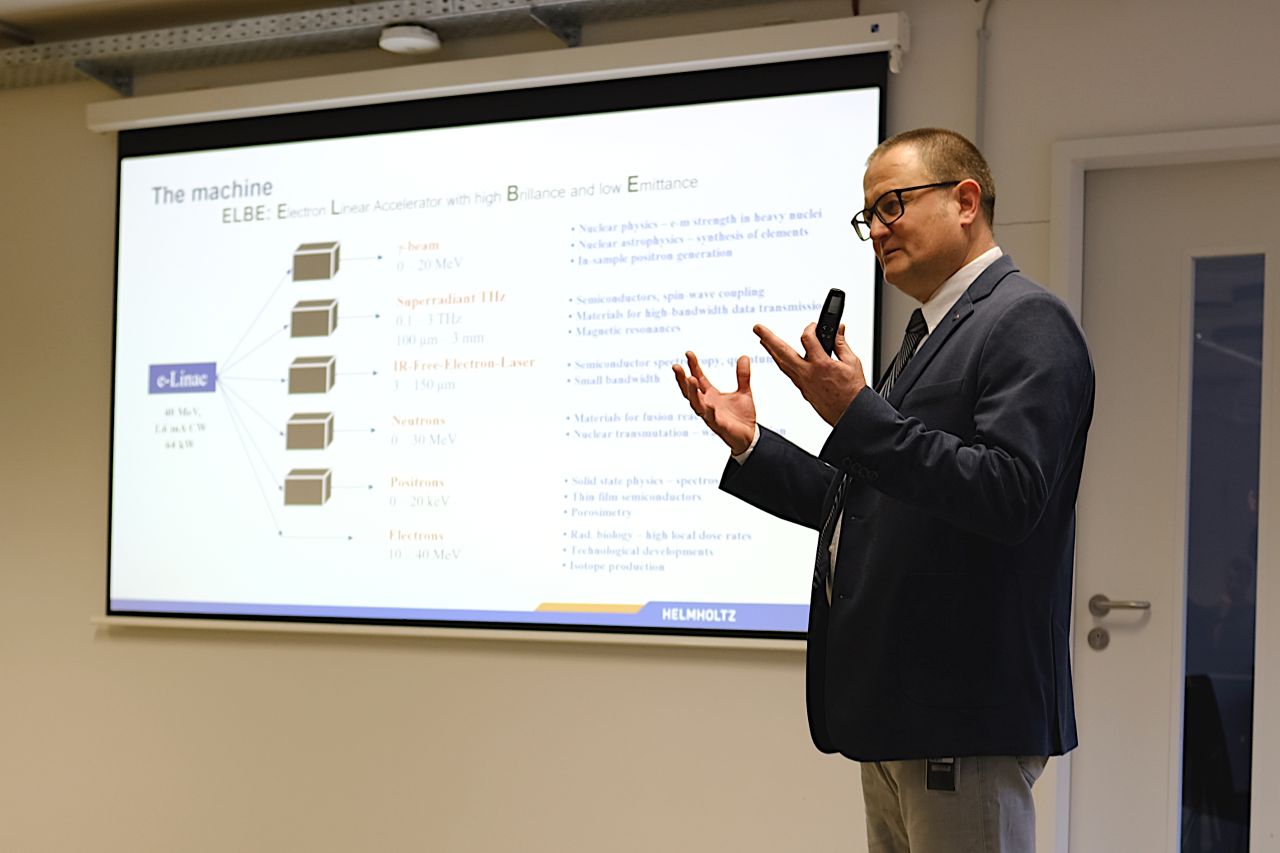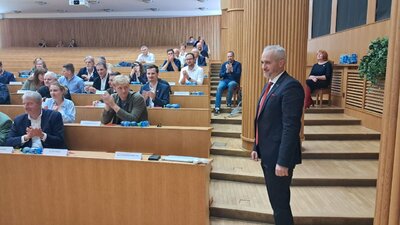Andreas Wagner, an outstanding nuclear scientist, has become a new visiting professor at the Slovak University of Technology. Oliver Moravčík, the STU Rector, handed Professor Wagner the appointment decree in Dresden, where Professor works at the Helmholtz-Zentrum Dresden – Rossendorf (HZDR) and at the local university. Professor Wagner will lead seminars for PhD students at the STU Faculty of Electrical Engineering and Information Technology (STU FEI). The STU Scientific Board has approved his visiting professorship in the study field of Nuclear and Physical Engineering at the meeting of 13 December 2023.

Dipl.-Phys. dr. rer. nat. Andreas Wagner is a prominent personality in the field of nuclear engineering and materials research. His research activities are focused on measurement of lifetimes in positron annihilation, development of detectors for base research and in vivo dosimetry during radiation therapy of tumours, nuclear astrophysics with exotic nuclei, nuclear multifragmentation and mesons production in medium-energy/heavy ion collisions. Besides being an important expert in his field of research, Andreas Wagner also a leading representative of HZDR, which will enable to establish scientific and research cooperation between STU and HZDR.
"In terms of internationalization and cooperation in a common European research area, we have acquired a visiting Professor as well as an excellent scientist with previous activity in the USA and France in the field of nuclear engineering. As Dr. Wagner has been preparing a joint TEAMING project between HZDR Dresden-Rossendorf and STU FEI since November 2023, he will work for the STU FEI for two years," said Oliver Moravčík, STU Rector.


Andreas Wagner completed his Master's degree (Dipl.-Phys.) in June 1992 in Physics by writing his thesis on "Time-of-Flight Measurements using a Kaon Spectrometer" at the Darmstadt University of Technology, Germany. He defended his doctoral studies in December 1996 at the same University by writing the thesis on "Systematic investigation of symmetric heavy ion collisions: probing neutron-proton dynamics by pions ". In the years 1997-1999, he was a visiting researcher at the National Superconducting Cyclotron Laboratory, Michigan State University, USA.
In the years 1999-2004, he worked as a researcher at the Dresden-Rossendorf Research Centre, where he founded the Department of Nuclear Astrophysics, while focusing on the design and setup of neutron time-of-flight and gamma radiation sources at a superconducting electron linear accelerator. Since 2004, he has been working at the Helmholtz-Zentrum Dresden-Rossendorf (HZDR), bearing responsibility for the construction and operation of the Felsenkeller underground nuclear physics laboratory. His research was devoted to the design and construction of gamma-activation and several electron-positron annihilation spectroscopy systems at the ELBE Centre for High-Power Radiation Sources. He also worked on the development of detectors and methodology for the R3B collaboration at GSI/FAIR and the immediate validation of gamma radiation therapy at the OncoRay University Centre for Proton Therapy in Dresden. In the years 2008-2012 and again since 2021 he has worked as an elected member of the HZDR Scientific and Technical Board. He was the Chair of the "Detector Systems and Technologies" Cooperation Board of the Helmholtz Association (until 2020). Currently, he is also the Head of the HZDR Nuclear Physics Department.
As a researcher, he is an author or co-author of 379 peer-reviewed publications, which have received 7822 citations, thus reaching the Hirsch index of 47. He is also an author of two German patents. He worked as an evaluator of research project applications for the German Research Foundation, the Finnish Academy, the PAZY Foundation (Israel), and the Alexander von Humboldt Foundation.
26.1.2024





